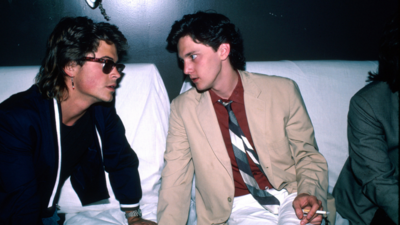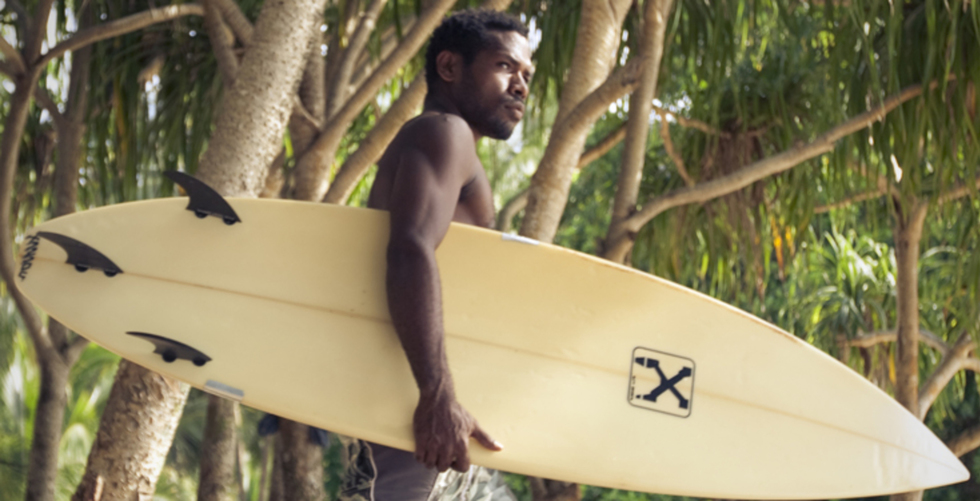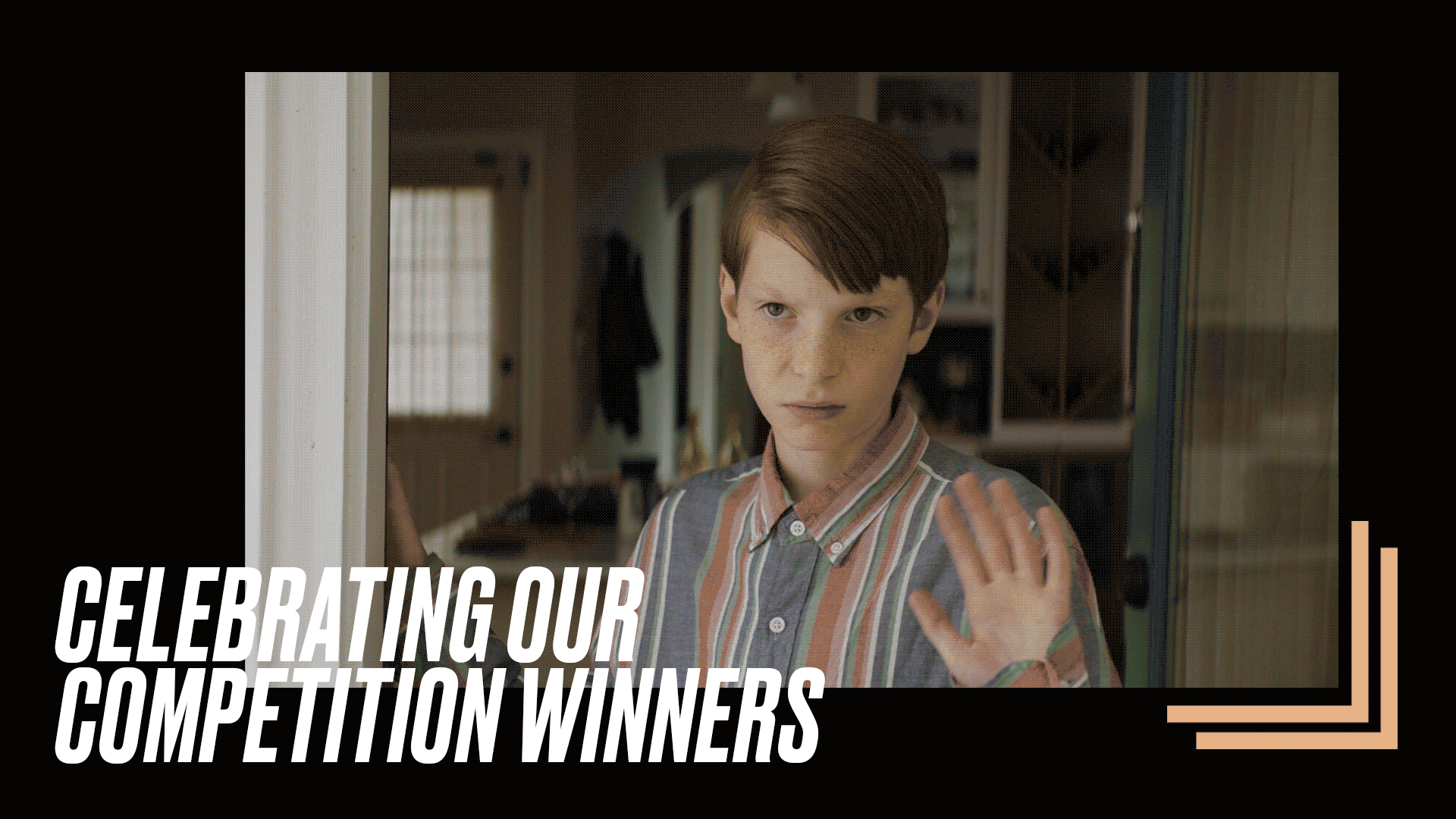
BY KRISTIN MC CRACKEN |
Splinters: Surfin' Papua New Guinea
The aptly-named Adam Pesce shipped out to Papua New Guinea with only a camera and an interest in a remote village's pastime: surfing. Opens Friday!

Note: This interview originally ran as part of our coverage of the 2011 Tribeca Film Festival. Splinters opens theatrically on Friday, February 3, in New York and Los Angeles, with more cities to follow in the coming weeks.

Tribeca: Please tell us about Splinters.
Adam Pesce: Splinters is the first feature documentary about native Papua New Guinea surfers. Papua New Guinea is one of the most remote, far-flung, and undeveloped countries in the world, and in the 1980s a pilot left a surfboard in this remote seaside village called Vanimo. I pick up 20 years later, on the eve of their first national surfing competition, to see how this surfing experiment has unfolded. In the film, I follow 4 native villagers and their quest for this competition.
Tribeca: What inspired you to tell the story—how did you learn about Vanimo?
Adam Pesce: It was a strange mix of a bunch of different passions of mine. I’m a surfer, I studied international relations, and I kind of had an interest in the developing world. I took just one simple documentary film class in university, and it kind of got me excited about this form of filmmaking.
I read an article about this remote village that had taken to surfing, and it seemed worthy of exploring. So I went there in 2004 with a few friends—never having had made a film before, not knowing which way was up—and came back after shooting for a few months. I didn’t have a film, it was just something of a research trip.
Fast forward 2 years—nothing’s happened—and I hear about this competition that’s going take place and I realize then that that’s what I need to string this story together. But this time I didn’t have anyone to go with me, so I packed up my boards, a few cameras, my tapes, and I had this vow not to come back to the States until I had a film.
I wanted to immerse myself, and I realized that the only way to tell the story correctly would be to be a part of this village. So part of my process was living in this village, learning the national language, which is Melanesian Pidgin English, also called Tok Pisin.

Tribeca: I noticed that you were one of the translators on the film, and I was impressed!
Adam Pesce: That was a critical component, because the documentary films I really enjoy are ones that expose you to a world that you’d never otherwise have access to. But so much of that is based on the filmmaker’s relationship with the subject—how much time they spent together, how much trust there is. So for the first 2 months of my second trip, I barely shot anything. I spent most of that time learning the language so that I could understand what was happening and be understood. And then it was just figuring out who all these people were in this village.
Tribeca: How many people live there?
Adam Pesce: Close to 1000… So to wrap up the timeline, I stayed in, ended up staying in Vanimo for about close to 7 months, through the competition.
Tribeca: Without giving too much away, the ending leaves you hanging… we want to know more!
Adam Pesce: There’s a format with a lot of documentaries where you have the story happen and then you get the resolution, where they are today, etc.
But somehow, when we watch a feature fiction film, we don’t need to know that information, we don’t need to know that the character’s lives go on. The story just stops there and you’re left to wonder. I wanted to take a more fiction narrative approach to this film…
Tribeca: But we want to know what happened! [laughs]
Adam Pesce: There will be plenty of DVD extras that will explain all… It makes me really happy that people get invested in the characters who are from a completely different part of the world—one that’s generally foreign—and also from a walk of life that’s really kind of out of the norm of most people’s existence.

Tribeca: How did the villagers feel about cameras? Was that all new to them? Did they get used to them?
Adam Pesce: It's certainly not like this village hasn't had contact with the West; it was a theater of war during World War II. These days, a few people have televisions. So it's a case where if 40 people come over with a few Kina (Papua New Guinean currency) apiece for petrol for a generator—that's the context in which you have a screen.
But I also had to explain what the end product was going to be; it was hard for them to have a context.
Tribeca: What did you learn as a first-time filmmaker?
Adam Pesce: Everything was for the first time. This Prosumer camera had come out, and I was like, “All right, guess I’m going to have to learn how to shoot.” And so I learned how to shoot, and then I had a whole bunch of tapes, and I said to myself, “I guess I’ll have to learn how to edit.” It was this constant “necessity being the mother of invention” kind of thing. So it was a really hands-on process for me, and that made it a very personal film.
Tribeca: What’s your advice for aspiring filmmakers?
Adam Pesce: I’d say either, don’t think about it at all, just do it—OR—really, really, think about it, and how much time and energy and resources it’ll take to come to fruition. It’s honestly a very long path—I think Splinters might be at one end of the spectrum—but in order to weather all the bumps in the head, you have to love the subject. You have to love what you’re doing, for so many reasons.

Tribeca: Your editing is really nice, when you’re watching those surf rides. It’s a beautiful film, gorgeous.
Adam Pesce: Thanks. Kim Roberts was our editor, and she’s amazing. She was responsible for Food, Inc., and Waiting for Superman. And it was really fantastic to work with her. I learned a lot from her, and I was able to have my hand in the editing, in the surfing sequences and elsewhere. But for me, it was a real pleasure and honor to work with her. She made the film.
Tribeca: What makes Splinters a must-see?
Adam Pesce: Splinters is something of a genre-bending film. It has the elements of your typical competition film, a la your classics like Spellbound or Murderball. But it also has an anthropological slant to it, where you really are getting immersed in a culture that’s very different from your own as an American. And then it also pays homage to surf films, you know, the classic sort of timeless “casting-off-your-worldly-possessions” sort of thing. Hopefully, what you can see about Splinters is that it does justice to all those kinds of films. And it gives you an eye into a world that you might not otherwise have.
Tribeca: Did you surf the whole time?
Adam Pesce: [laughs] Yeah.
Tribeca: And was it the best surfing you’ve ever had?
Adam Pesce: Oh, absolutely. Every morning I’d wake up and walk out on my porch and check the surf. And in between shooting, that was the reprieve, and it was interesting—that was the way to let the day kind of wash off. It was sometimes really intense, and you needed to have that yin and yang. And also it was interesting for the subjects: they have this really intense life, on the ocean and on the land—so it was cool to see how that was a reprieve for them too.
Tribeca: What would your biopic be called?
Adam Pesce: “A Camera, A Surfboard, and Two Bouts of Malaria.”
Splinters opens this weekend, February 3, in New York and Los Angeles, with more cities to follow in the coming weeks. Check out the entire screening schedule. In New York, tickets to Cinema Village screenings are available on Groupon.

